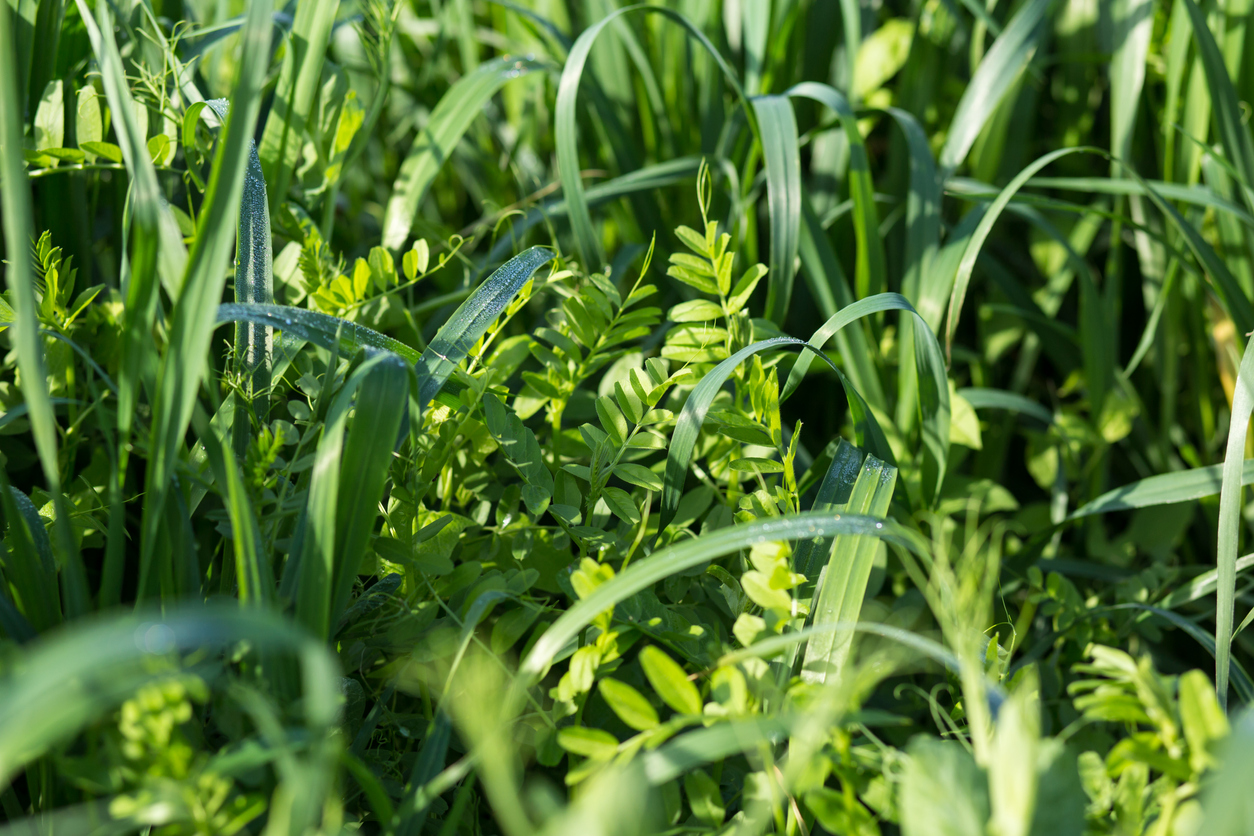Summer Cover Crops
Wheat harvest is mostly complete and many fields are being baled for straw. Some farmers have planted double crop soybeans, but with the sporadic rains, many fields are lying bare. Looking at the calendar, it’s too late to plant soybeans and bare fields just grow weeds! Another option is to plant a cover crop, depending upon your goals, and what crop will be planted next year.
Cover crops planted in August have an advantage over fall planted cover crops. First, they capture more sunlight. Cover crops need at 60-90 days of growth before winter to survive. Second, if you spray the weeds first before you plant, there is less competition, so they produce better stands. Third, summer and fall rains allow cover crops to get better growth. Generally, what ever growth you get above ground is going to be matched below ground. For these reasons, planting cover crops after wheat has many advantages.
To optimize cover crop growth, the best thing to do is bale the straw. It is not a deal breaker, but it helps growth. The chaff and straw sometimes has an allelopathic (poisonous) effect on cover crop seed germination. The next option, do you drill it or broadcast it. Drilling is always preferred over broadcasting seed. The stands are better with drilling. For broadcast seed, there are several problems. One is timely rains. Second are pests: slugs, voles or field mice, and even earth worms like to eat exposed seed lying bare on the soil surface. For these reasons, drilling or planting or even lightly tilling seed into the soil is beneficial.
If you want to purchase cover crop seed, whether for fall planting or summer planting, the earlier you order it the better. With the H20 Ohio program and other various government and private initiatives, some cover crop seed may be in short supply. Farmers should look into the various programs. Deadlines to apply for government compensate to plant cover crops generally occurs around late fall (about November 1st) so apply early. To get compensated, you have to follow NRCS (Natural Resource Conservation Service) rules for planting cover crops.
NRCS requires cover crops that over winter, specified seeding rates, and seeding deadlines. Seed quality can be harmed by weed seed (purity) and low germination. NRCS requires adjustment factors (need more seed) if seed purity (too many weed seeds) or seed germination is less than 86%. See NRCS Appendix A for adjustments. Farmers can use bin run seed or their own seed, but seed testing or seed tags are required for purity and germination to get payment. Farmers have to decide why (goals) they are planting cover crops. If fighting weeds is a goal: cereal rye, radish, buckwheat, and oats are the best weed fighters. Cereal rye has a natural chemical in stems and leaves which reduces weeds seed germination. Radish roots have glusinate, a natural herbicide that also prevents weeds from establishing. All cover crops help reduce weeds to some degree simply by out-competing weeds for sunlight, water, nutrients, and shading.
If the goal is to reduce compaction, improve soil structure or improve drainage: plant deep rooted cover crops like kale, rape, daikon radish, sorghum or sudan cover crop varieties. For shallow compaction or soil crusting use oats and/or buckwheat with fibrous roots near the soil surface. For manure applications, use grass species that absorb manure nutrients: cereal rye, barley, oats, millets, sorghum or sudan varieties. For manure, generally plant grass species that over winter for fall application: cereal rye, barley. For manure applied in the summer: oats, sorghum, sudan, millets can be planted but these species will die in the fall with a hard frost.
Plant cover crops that compliments the crop to be grown the following year. For corn, try to plant some legumes and/or clovers which produce nitrogen(N). Hairy or common vetch on well drained soils, Balansa, crimson clover, red clover on poorly drained soils. All legumes ands clovers need inoculation with the proper species of Rhizobium bacteria to maximize the free production of N in the nodules at planting. Some legume/clover cover crop species may produce from 50-150# N for the corn crop. Often oats and radish are included in a blend going to corn. The oats are highly mycorrhizal, meaning they promote beneficial fungus for both corn and soybean production. Soybeans, responds best to the high carbon cover crops with fibrous root systems, mainly grass or brassica cover crops. Cereal rye, barley, oats, and wheat are high in phosphorus and loosen the soil. Low rates of brassicas (kale, rape and/or radish) can be added to mixtures. Wheat fields offer many possibilities for planting cover crop mixes.
